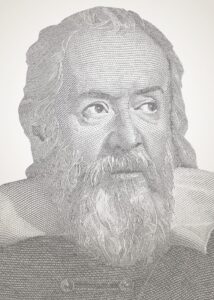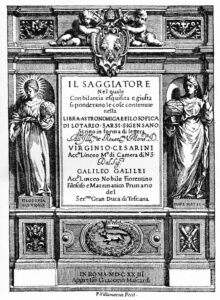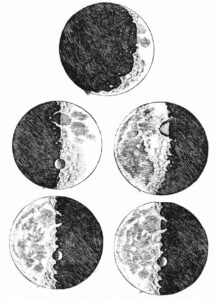HUMANIST VIEW | Celebrating the Mind, not the Myth, of Galileo

Next week, on February 15th we celebrate the birthday of Galileo Galilei, the 17th-century Italian astronomer, physicist, engineer, and polymath widely regarded as the father of modern science.
Incidentally, 2023 marks the 400-year publication anniversary of Galileo’s The Assayer, a revolutionary work that laid the foundations of the scientific method. The book is a milestone in the separation of science from philosophy and religion and notable for its famous passage that the natural world is “written in the language of mathematics.” The Assayer was dedicated to Galileo’s patron, Pope Urban VIII—the same pope who would charge him with heresy a decade later—and who, by all accounts, loved the book.
The fact that Galileo was a devout Catholic his entire life and had a close relationship with the Church may come as a surprise. Stories that emerged in the centuries after his death created a legend of Galileo as a renegade against religious authority, one forced to reluctantly recant his support for the Copernican assertion that Earth revolves around the sun. There’s even the myth that, after being forced to recant he muttered, “E pur si muove,” (And yet it moves)—a snarky aside that exalted him to iconic status as a man of science who refused to surrender to religious authority.

Title page of The Assayer (Italian: Il Saggiatore), 1623. The crest at top featuring three bees is the crest of Cardinal Maffeo Barberini, to whom the book was dedicated and who would later become Pope Urban VIII.
However, that myth is likely just that: a myth. The fact is that Galileo did recant, and “E pur si muove” is an unsubstantiated story that emerged long after his death. But why are such stories even necessary? Galileo was a brilliant human whose discoveries laid the foundation of modern science. This Galileo Day we should reflect on him not with half-truths about one aspect of his remarkable life—but with the facts about his numerous contributions to human thought.
Galileo was born on February 15, 1564 in Pisa. His father was a lutenist who also had a scientific mind and even conducted physics experiments with strings to study pitch. When his family’s fortunes took a turn, Galileo decided against a life in the priesthood and instead turned to study medicine, art, and mathematics.
In the early 1600s, Galileo built his own telescope after reading a vague description of one crafted in Holland. While his may not have been the first, it was likely the first used to study astronomy, and with it he observed the Milky Way and the phases of Venus. Galileo also studied the moon, being the first to note it was not a sphere and that its surface is riddled with craters and mountains. He also observed the four largest moons of Jupiter (now known as the Galilean moons)—making him the first person to observe an object orbiting a planet other than Earth.
His contributions to science and engineering abounded. Galileo invented a precursor to the thermometer, a military compass, and was among the first observers to note the appearance of sunspots. His studies in physics, along with that of Kepler and Descartes, laid the foundation for the classical mechanics of Isaac Newton (born a year after Galileo’s death) and the basic principles of relativity that Albert Einstein would expand upon nearly three centuries later.

“It is a beautiful and delightful sight to behold the body of the Moon.”—from Sidereus Nuncius (Starry Messenger), 1610.
While Galileo is rightly lauded and celebrated for these achievements, he’s also viewed as a superhero who stood up against powerful science deniers. In 1632, Pope Urban VIII asked him to compare geocentric and heliocentric views of the world, being careful not to advocate for the latter, which was considered heretical by the Church. Galileo agreed and wrote Dialogue Concerning the Two Chief World Systems, in which his own observations (either intentionally or unintentionally) tipped the argument in favor of it. The subsequent trial with its charge of heresy is viewed by many freethinkers as a famous showdown between science and religion. However, recent scholars believe the situation was far more complicated; the heresy charge was wrought with political infighting around the Pope, who may have been convinced by Galileo’s enemies to target him.
Ultimately, Galileo was found “vehemently suspect of heresy” (never actually charged with heresy itself), and the punishment was to recant his Copernican views. He was also sentenced to house arrest and prohibited from publishing. In the following years, he avoided discussion of heliocentrism and returned to his previous studies in physics. In 1638, he completed his final book, Two New Sciences, which was published in Holland to evade censorship. This was his most groundbreaking work, anticipating the laws of motion and the concept of relativity. That same year, he went blind (likely due to a congenital condition—not from his study of sunspots), and died in 1642 at the age of seventy-seven.
So this Galileo Day, let us celebrate the man not as a symbol but as a uniquely gifted individual. As humanists, we don’t need mythology to bolster our appreciation for such a singular person; the facts and legacy of his work are sufficient. Let us appreciate that and the remarkable tools he gave us to measure the universe.
